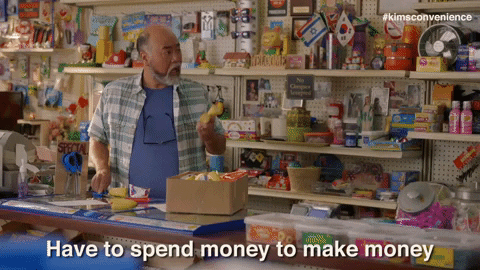
If you’ve scoured the internet for money tips after your hard-earned cash vanished into the UberEats and online shopping void in 2020, you’ve likely come across the term ‘micro-investing’.
Now, I know it’s easy to feel personally attacked every time the word investing pops up, but I am here to tell you micro-investing is a whole different ball-game and boy, is it simple to get on board.
Micro-investing is like a gateway into the stock market. To get started, all you’ll need to do is make a plan as to how much you’re willing to invest regularly (hot tip – it won’t be much), read up on what kind of stocks you might want to invest in, and a platform that’s going to allow you to do so.
Three things, and boom, you’ve opened the doors to a whole new realm of financial possibilities.
So, since many young people have hopped aboard the micro-investing train, we had a chat to Josh Gilbert of investing platform eToro to give us a look into what it all is and just how easy it can actually be to get started.
What exactly is micro-investing & should I start?
According to Josh, micro-investing means investing small amounts of money into shares regularly. It’s different from ‘traditional’ types of stock brokerage accounts that require large minimum spends.
Basically, it’s made building up an investment portfolio accessible to people who don’t have huge savings or disposable incomes but are still keen to get into the market.
“Micro investing usually means investing frequently. This can be every day, week or month. This is completely up to you. If you are thinking of investing $100 every month, it may be better to invest $50 every two weeks,” said Josh, breaking down the nuts and bolts of it all.
$50 every two weeks sounds pretty manageable, right? Considering you’re breaking down your financial goals into regular weekly nuggets, it’ll be a good system to put in place if you find it difficult to save money.

What are the benefits & risks of micro-investing?
Although you’re not dropping huge amounts of money when micro-investing, it’s important to note that because the stock market is continually fluctuating, there’s ~always~ going to be a risk involved.
“Micro investing still means you are investing, and any level of investing provides different risk. It’s worth ensuring that you are comfortable with what you’re investing in before committing any funds,” said Josh.
That being said, there are heaps of benefits to using the method, and it’s a great way to test the waters with investing as it allows the option to start slow with it all.
Here’s a breakdown of the main benefits:
- You can invest small amounts regularly, rather than lump sums.
- It’s great for people with limited incomes or assets.
- You have the ability to choose between multiple investment options such as Stocks, Exchange Traded Funds and Crypto Assets.
Can micro-investors choose what type of stocks they invest in?
This is where your research is going to come in handy.
Most micro-investing platforms will give you the option to invest in most stock exchanges globally, as well as give investors the option to buy ETFs. ETFs are helpful because they provide you with an investment in an overall index or commodity.
“For example, investing in an ETF that is tied directly to the S&P 500 tracks the performance of the S&P 500 index and gives investors exposure to the US market,” explained Josh.
“At eToro, the minimum trade on any stock is $50, so you have the choice to pick which stocks you want to invest in.”

Can you choose how much you invest when micro-investing?
Last but not least, although some platforms will require a minimum spend, you’ll be able to choose how much you want to invest while micro-investing. This is mostly dependant on how you feel about the risks involved with the purchase of shares, so it’s best to read up on what shares you’re thinking of buying first.
“As you become more comfortable with investing, you can increase your investment. You may also receive a salary increase which may mean that you decide to invest more regularly or with larger amounts,” added Josh.



